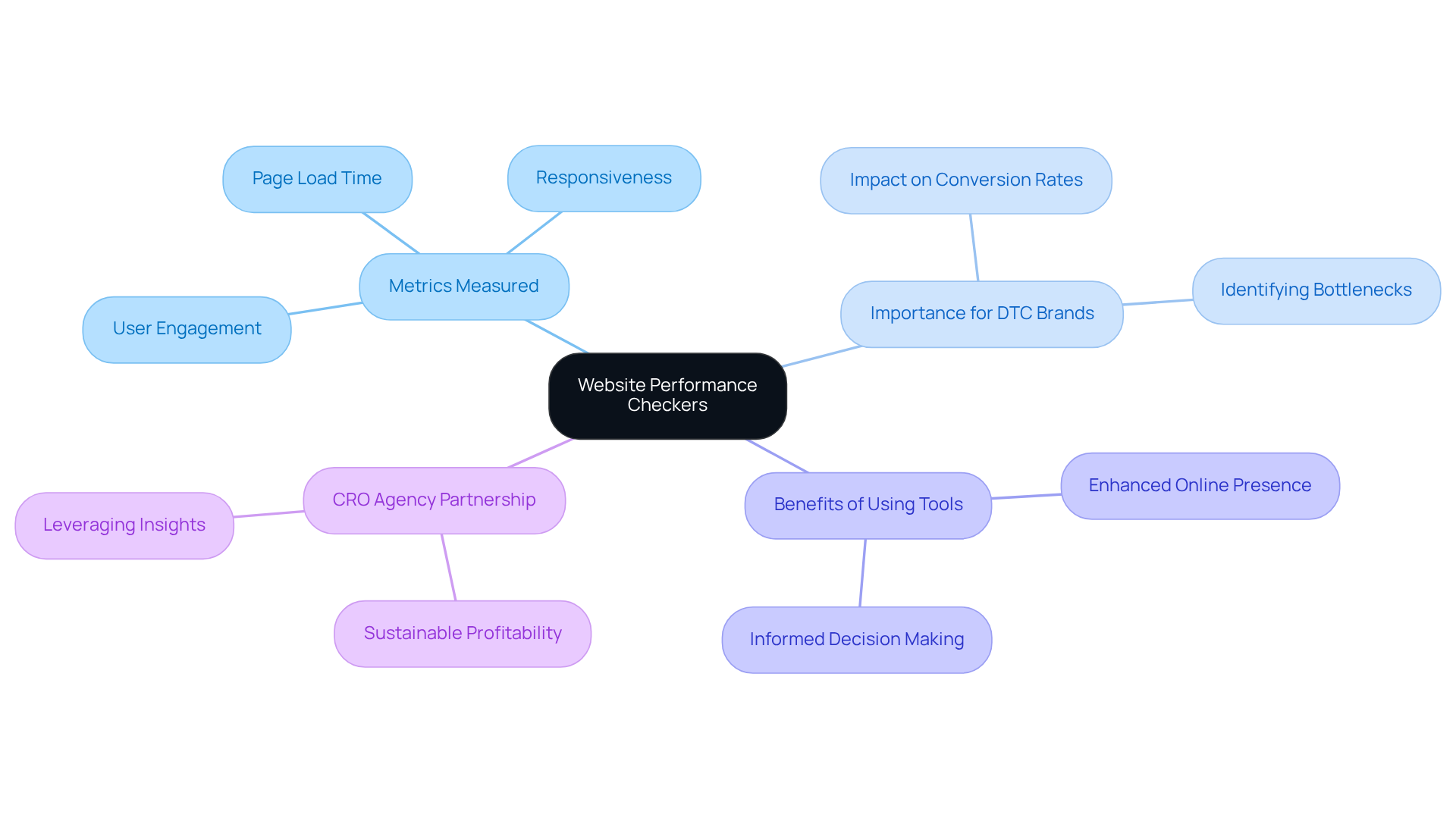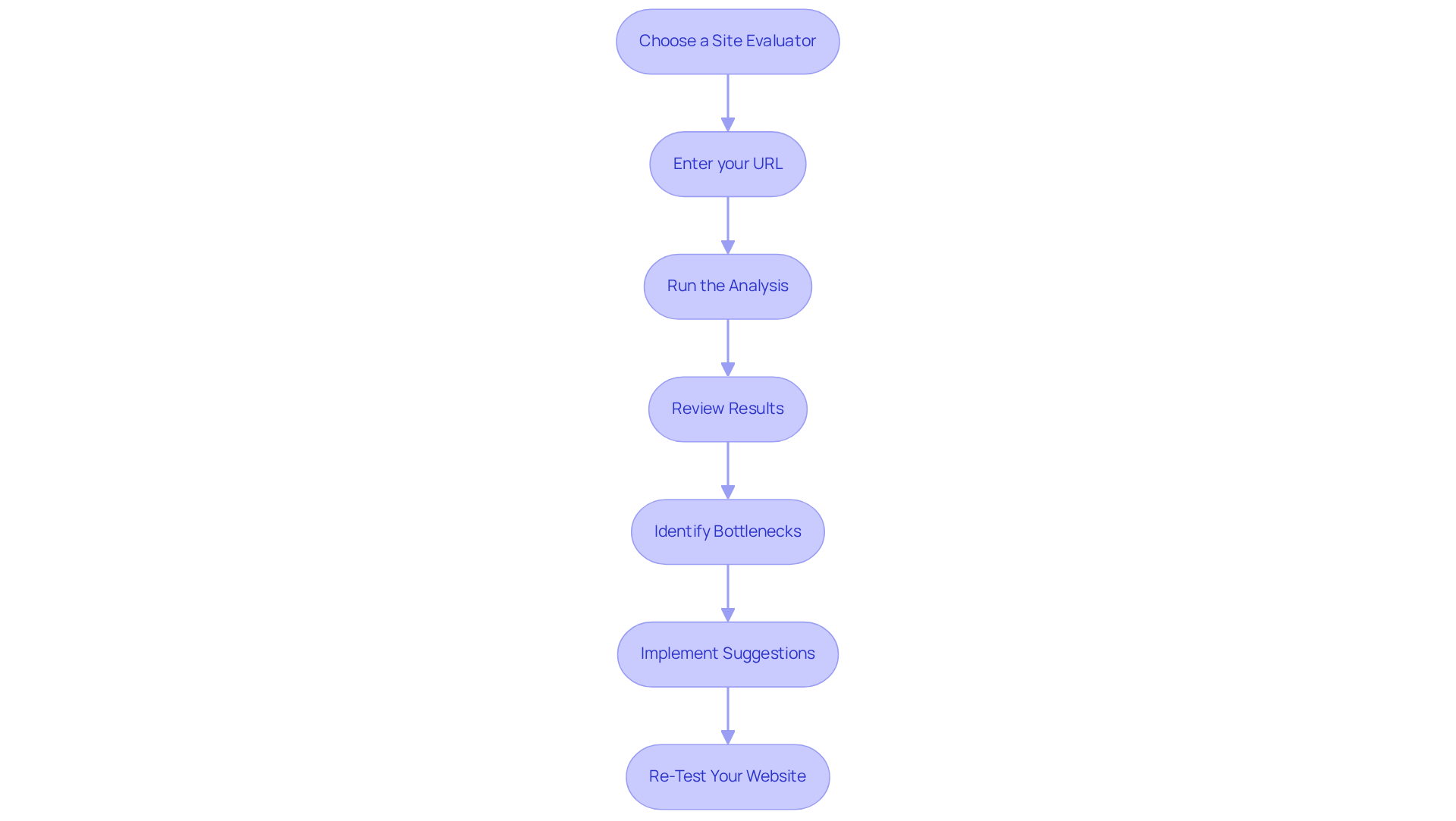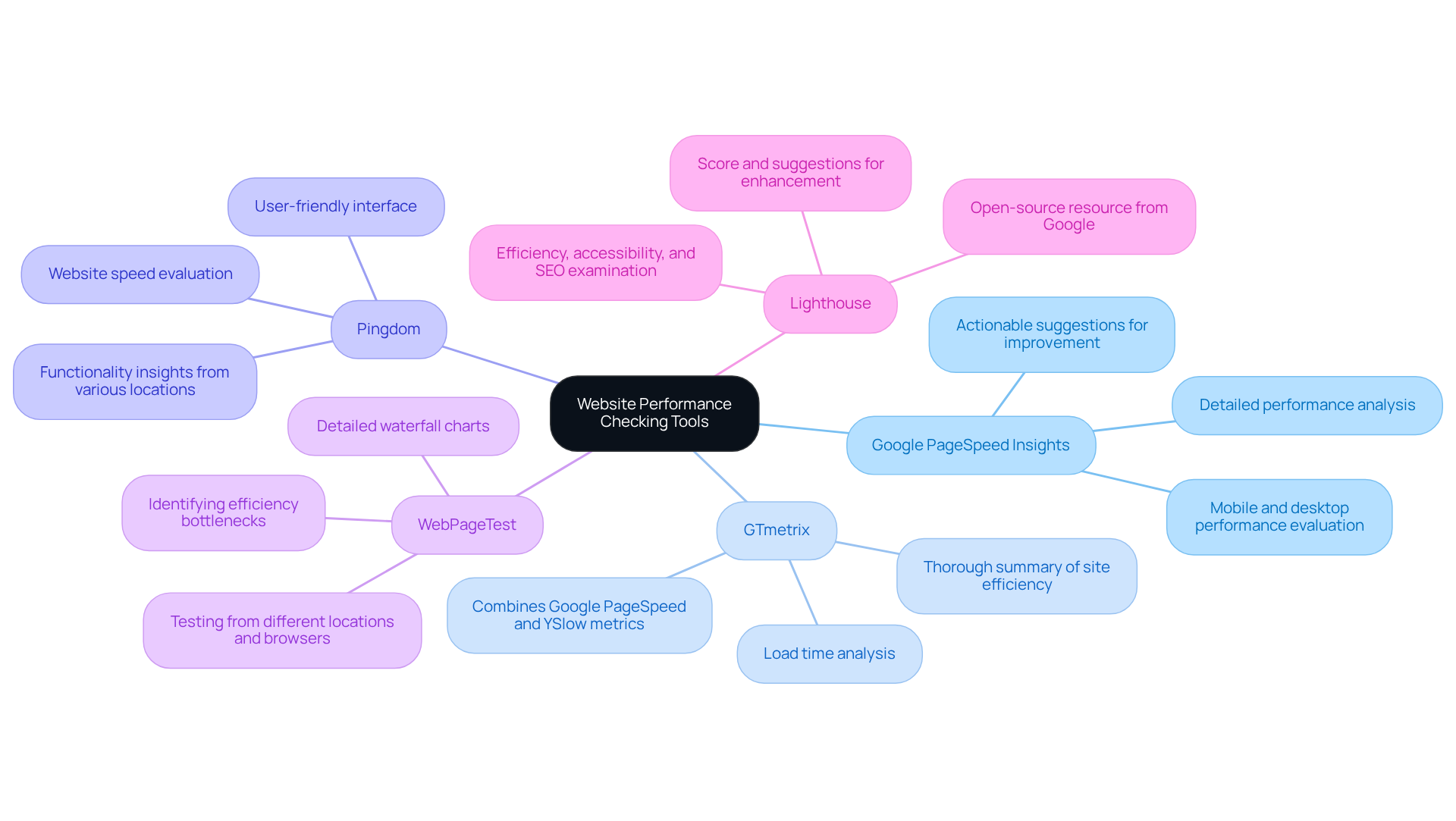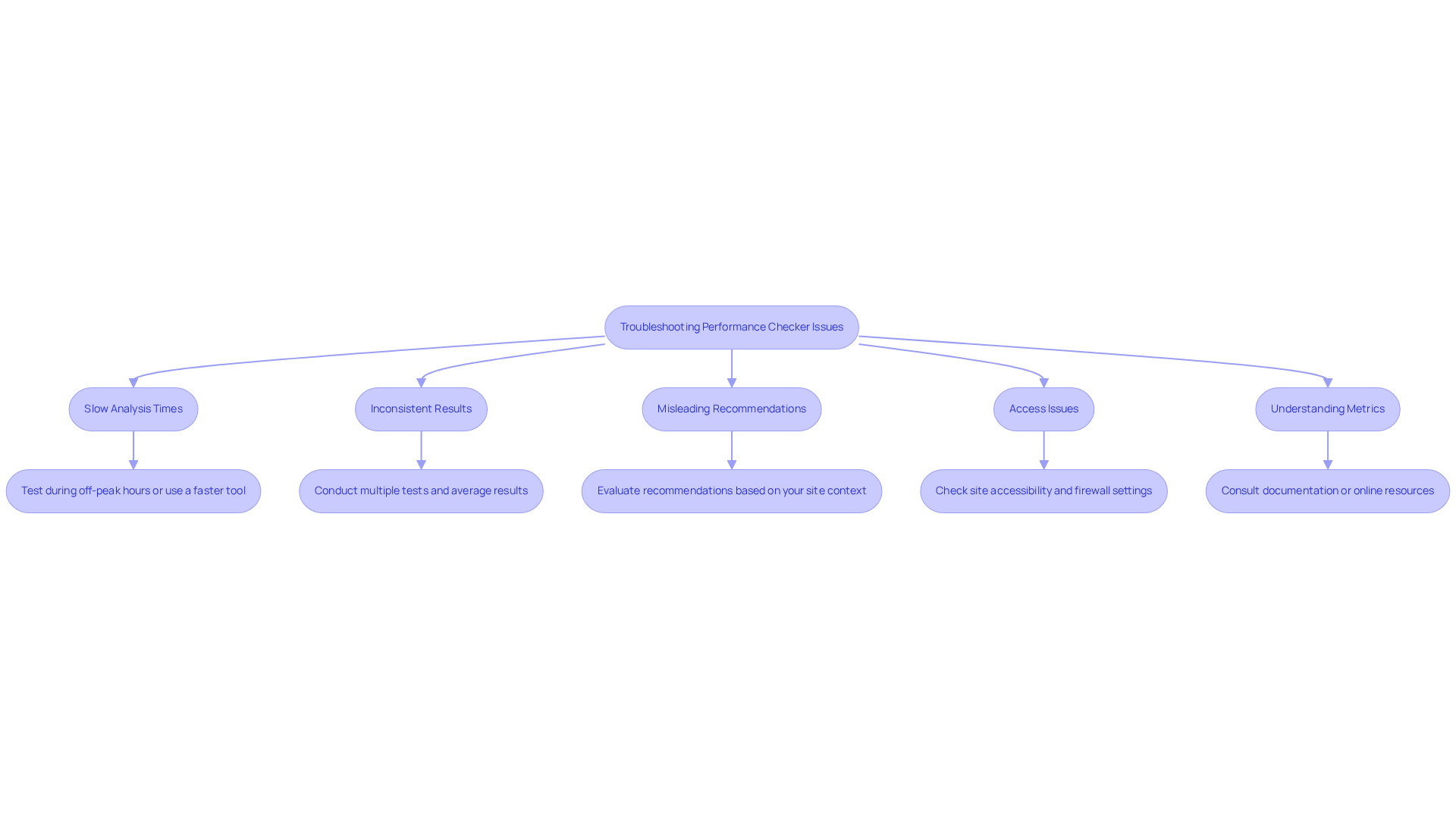
Overview
Website performance checkers are essential for the success of direct-to-consumer (DTC) brands. They evaluate website functionality, speed, and user experience—factors that directly influence conversion rates. By leveraging these tools, DTC brands can identify and address performance bottlenecks. This proactive approach not only enhances their online presence but also drives profitability through an improved user experience.
Ultimately, the effective use of performance checkers can transform a brand's digital landscape, ensuring that every visitor has an optimal experience that encourages conversion.
Introduction
Website performance stands as a pivotal element that can decisively influence the success of direct-to-consumer (DTC) brands in today's fiercely competitive landscape. As consumers increasingly demand seamless online experiences, it becomes imperative for brands to understand how to effectively harness website performance checkers. This understanding is essential for optimizing user engagement and enhancing conversion rates.
Yet, many brands encounter challenges in identifying the appropriate tools and interpreting their results—resulting in missed opportunities for substantial improvement. Thus, the question arises: how can DTC brands strategically leverage these powerful resources to elevate their online presence and drive profitability?
Understand Website Performance Checkers
Website performance checkers are essential tools designed to evaluate various aspects of a website's functionality, speed, and overall user experience. These analyzers measure critical metrics such as page load time, responsiveness, and user engagement, providing valuable insights that pinpoint areas needing improvement.
For direct-to-consumer (DTC) brands, where user experience directly impacts conversion rates, grasping the significance of these tools is paramount. A website performance checker uncovers bottlenecks that may dissuade potential customers, empowering brands to make informed, data-driven decisions to enhance their online presence.
By partnering with a proficient conversion rate optimization (CRO) agency like Parah Group, DTC brands can leverage these insights to effectively elevate their online platforms while focusing on sustainable profitability and growth. Familiarity with these resources enables brands to ensure a seamless shopping experience for users, ultimately driving conversions and boosting their profits.

Steps to Use a Website Performance Checker
-
Choose a Site Evaluator: Select a reliable website performance checker tool like Google PageSpeed Insights, GTmetrix, or Pingdom. Each of these tools offers unique features; therefore, choose one that best meets your specific needs.
-
Enter your website URL into the website performance checker to assess the webpage you wish to examine. This action initiates the evaluation process.
-
Run the Analysis by using the website performance checker; simply click on the 'Analyze' or 'Test' button to commence the evaluation. The tool will gather data on various performance metrics.
-
Once the analysis concludes, carefully review the results using the website performance checker. Focus on key metrics such as load time, performance score, and enhancement recommendations.
-
Identify Bottlenecks: Pay close attention to any highlighted issues, such as oversized images, unoptimized scripts, or sluggish server response times. Addressing these critical areas is essential.
-
Implement Suggestions: Follow the tool's recommendations to improve your online performance. This may involve compressing images, minifying CSS/JavaScript, or utilizing browser caching.
-
Re-Test Your Website: After implementing changes, re-run the assessment tool to evaluate the effects of your optimizations. This iterative process is vital for ensuring continuous improvement.

Explore Tools and Resources for Performance Checking
Several tools are available for checking website performance, each offering unique features that can significantly enhance your online presence:
- Google PageSpeed Insights: This tool provides a detailed analysis of your website's performance on both mobile and desktop devices, offering actionable suggestions for improvement.
- GTmetrix: GTmetrix merges Google PageSpeed and YSlow metrics to provide a thorough summary of your site's efficiency, including load times and suggestions.
- Pingdom: Pingdom offers an easy-to-use interface to evaluate website speed and functionality, providing insights into how your site operates from various locations.
- WebPageTest: This utility enables you to conduct tests from different locations and browsers, offering detailed waterfall charts to pinpoint efficiency bottlenecks.
- Lighthouse: An open-source resource from Google that examines efficiency, accessibility, and SEO, providing a score and suggestions for enhancement.
Employing these resources can assist DTC brands in using a website performance checker to preserve optimal site functionality, which guarantees an improved user experience and increased conversion rates.

Troubleshoot Common Performance Checker Issues
When utilizing website performance checkers, users may encounter several prevalent challenges:
- Slow Analysis Times: Should the performance checker take an excessive amount of time to analyze your site, consider testing during off-peak hours or opting for a different tool that offers quicker processing times.
- Inconsistent Results: Variations in results may arise from server load or network issues. To obtain a more accurate assessment, conduct multiple tests at various times and average the outcomes.
- Misleading Recommendations: Occasionally, tools may propose changes that are not pertinent to your specific site. Exercise your judgment and evaluate the context of your online platform before implementing any recommendations.
- Access Issues: If a quality evaluator is unable to access your site, verify that your site is operational and not restricted by a firewall or password protection.
- Understanding Metrics: If you find yourself uncertain about the metrics provided, consult the tool's documentation or seek online resources that elucidate metrics in detail.
By addressing these common challenges, DTC brands can enhance the effectiveness of their website performance checkers and ensure their websites are optimized for success.

Conclusion
Website performance checkers are indispensable for optimizing the online presence of direct-to-consumer (DTC) brands. By effectively assessing key metrics such as load times and user engagement, these tools empower brands to identify and rectify issues that may hinder customer experience and conversion rates. Understanding and utilizing these performance checkers is essential for DTC brands aiming to enhance their websites and drive sustainable growth.
The selection of the right performance checker and adherence to a structured approach for evaluating and improving website performance have been emphasized throughout this article. Key tools like Google PageSpeed Insights, GTmetrix, and Pingdom offer unique features that provide valuable insights into website efficiency. Additionally, troubleshooting common issues that arise during the performance checking process ensures that brands can maximize the effectiveness of these tools.
In today's competitive online landscape, prioritizing website performance transcends technical necessity; it becomes a strategic advantage. DTC brands must take actionable steps by employing these performance checkers regularly, implementing the suggested improvements, and continuously monitoring their website's performance. By doing so, brands can create a seamless shopping experience that captivates customers and significantly boosts conversion rates and profitability.
Frequently Asked Questions
What are website performance checkers?
Website performance checkers are tools that evaluate various aspects of a website's functionality, speed, and overall user experience, measuring metrics such as page load time, responsiveness, and user engagement.
Why are website performance checkers important for direct-to-consumer (DTC) brands?
For DTC brands, user experience significantly impacts conversion rates. Website performance checkers help identify bottlenecks that may deter potential customers, enabling brands to make informed, data-driven decisions to improve their online presence.
How can DTC brands benefit from using website performance checkers?
By using website performance checkers, DTC brands can uncover areas needing improvement, enhance user experience, and ultimately drive conversions and boost profits.
What should DTC brands consider when looking to improve their website performance?
DTC brands should consider partnering with a proficient conversion rate optimization (CRO) agency, like Parah Group, to leverage insights from website performance checkers for sustainable profitability and growth.
What metrics do website performance checkers typically measure?
Website performance checkers typically measure critical metrics such as page load time, responsiveness, and user engagement.
FAQs











